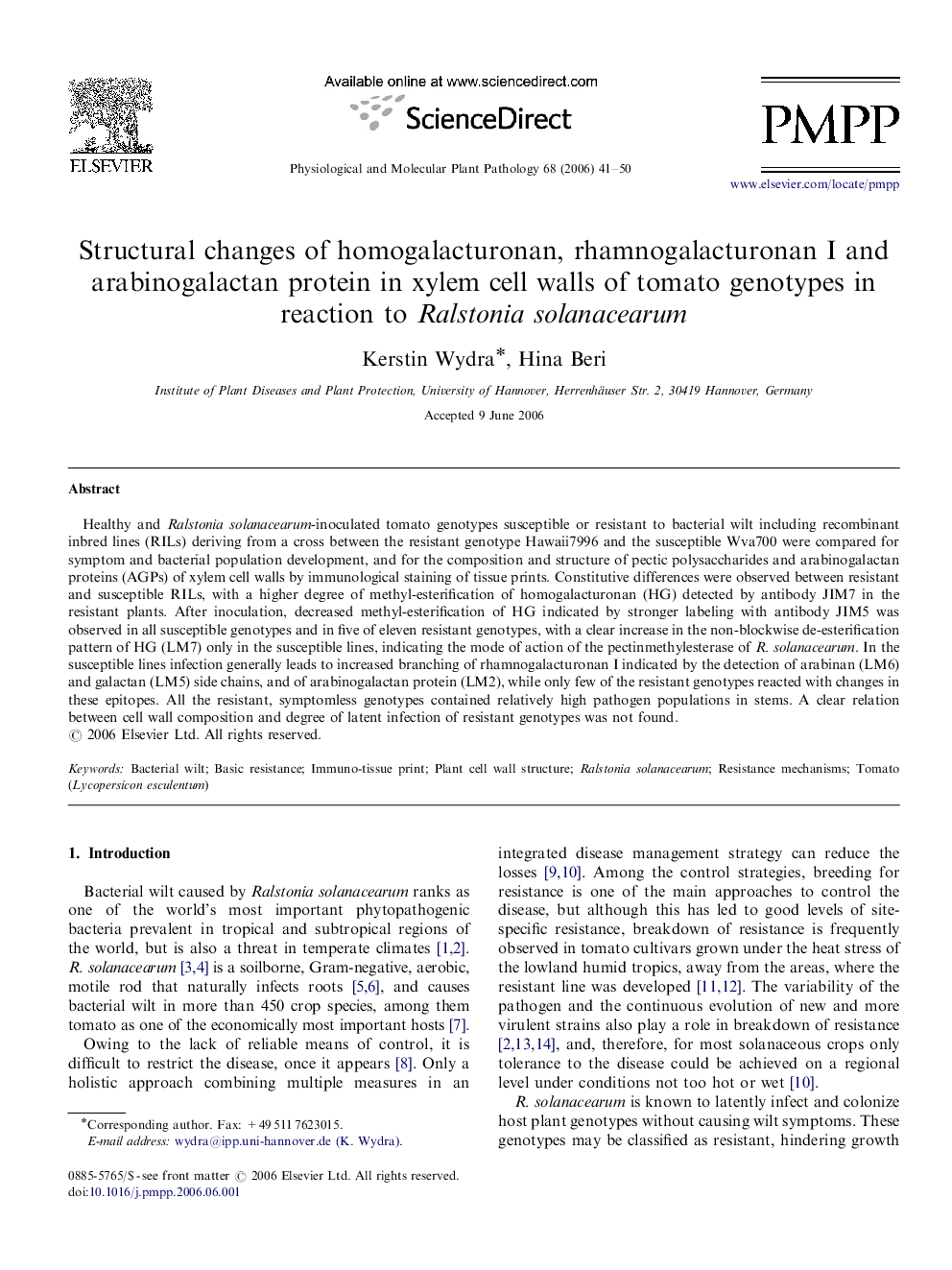| Article ID | Journal | Published Year | Pages | File Type |
|---|---|---|---|---|
| 2836823 | Physiological and Molecular Plant Pathology | 2006 | 10 Pages |
Healthy and Ralstonia solanacearum-inoculated tomato genotypes susceptible or resistant to bacterial wilt including recombinant inbred lines (RILs) deriving from a cross between the resistant genotype Hawaii7996 and the susceptible Wva700 were compared for symptom and bacterial population development, and for the composition and structure of pectic polysaccharides and arabinogalactan proteins (AGPs) of xylem cell walls by immunological staining of tissue prints. Constitutive differences were observed between resistant and susceptible RILs, with a higher degree of methyl-esterification of homogalacturonan (HG) detected by antibody JIM7 in the resistant plants. After inoculation, decreased methyl-esterification of HG indicated by stronger labeling with antibody JIM5 was observed in all susceptible genotypes and in five of eleven resistant genotypes, with a clear increase in the non-blockwise de-esterification pattern of HG (LM7) only in the susceptible lines, indicating the mode of action of the pectinmethylesterase of R. solanacearum. In the susceptible lines infection generally leads to increased branching of rhamnogalacturonan I indicated by the detection of arabinan (LM6) and galactan (LM5) side chains, and of arabinogalactan protein (LM2), while only few of the resistant genotypes reacted with changes in these epitopes. All the resistant, symptomless genotypes contained relatively high pathogen populations in stems. A clear relation between cell wall composition and degree of latent infection of resistant genotypes was not found.
